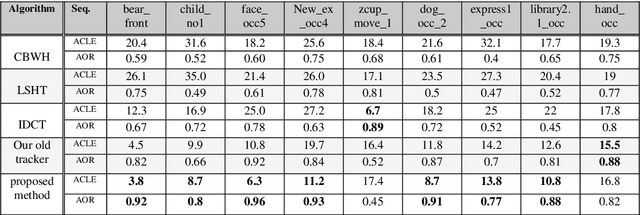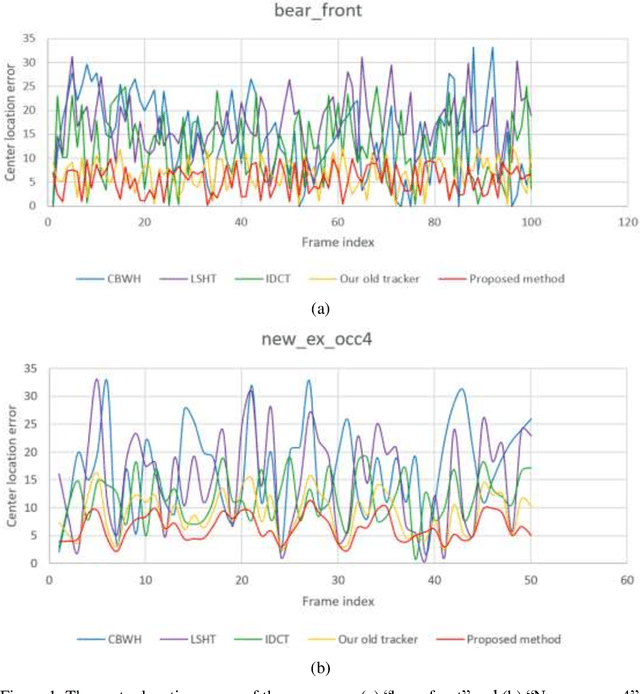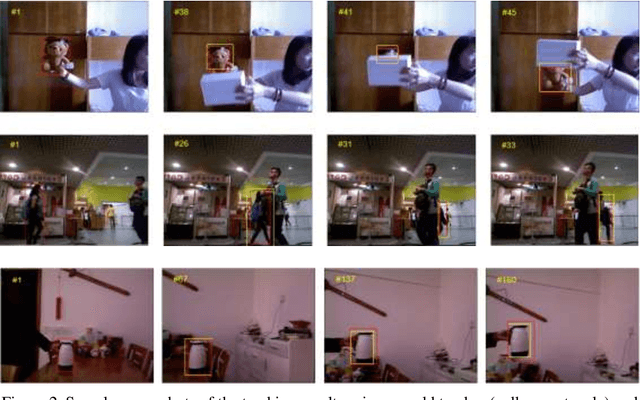Niloufar Salehi Dastjerdi
Applying r-spatiogram in object tracking for occlusion handling
Mar 18, 2020


Abstract:Object tracking is one of the most important problems in computer vision. The aim of video tracking is to extract the trajectories of a target or object of interest, i.e. accurately locate a moving target in a video sequence and discriminate target from non-targets in the feature space of the sequence. So, feature descriptors can have significant effects on such discrimination. In this paper, we use the basic idea of many trackers which consists of three main components of the reference model, i.e., object modeling, object detection and localization, and model updating. However, there are major improvements in our system. Our forth component, occlusion handling, utilizes the r-spatiogram to detect the best target candidate. While spatiogram contains some moments upon the coordinates of the pixels, r-spatiogram computes region-based compactness on the distribution of the given feature in the image that captures richer features to represent the objects. The proposed research develops an efficient and robust way to keep tracking the object throughout video sequences in the presence of significant appearance variations and severe occlusions. The proposed method is evaluated on the Princeton RGBD tracking dataset considering sequences with different challenges and the obtained results demonstrate the effectiveness of the proposed method.
 Add to Chrome
Add to Chrome Add to Firefox
Add to Firefox Add to Edge
Add to Edge